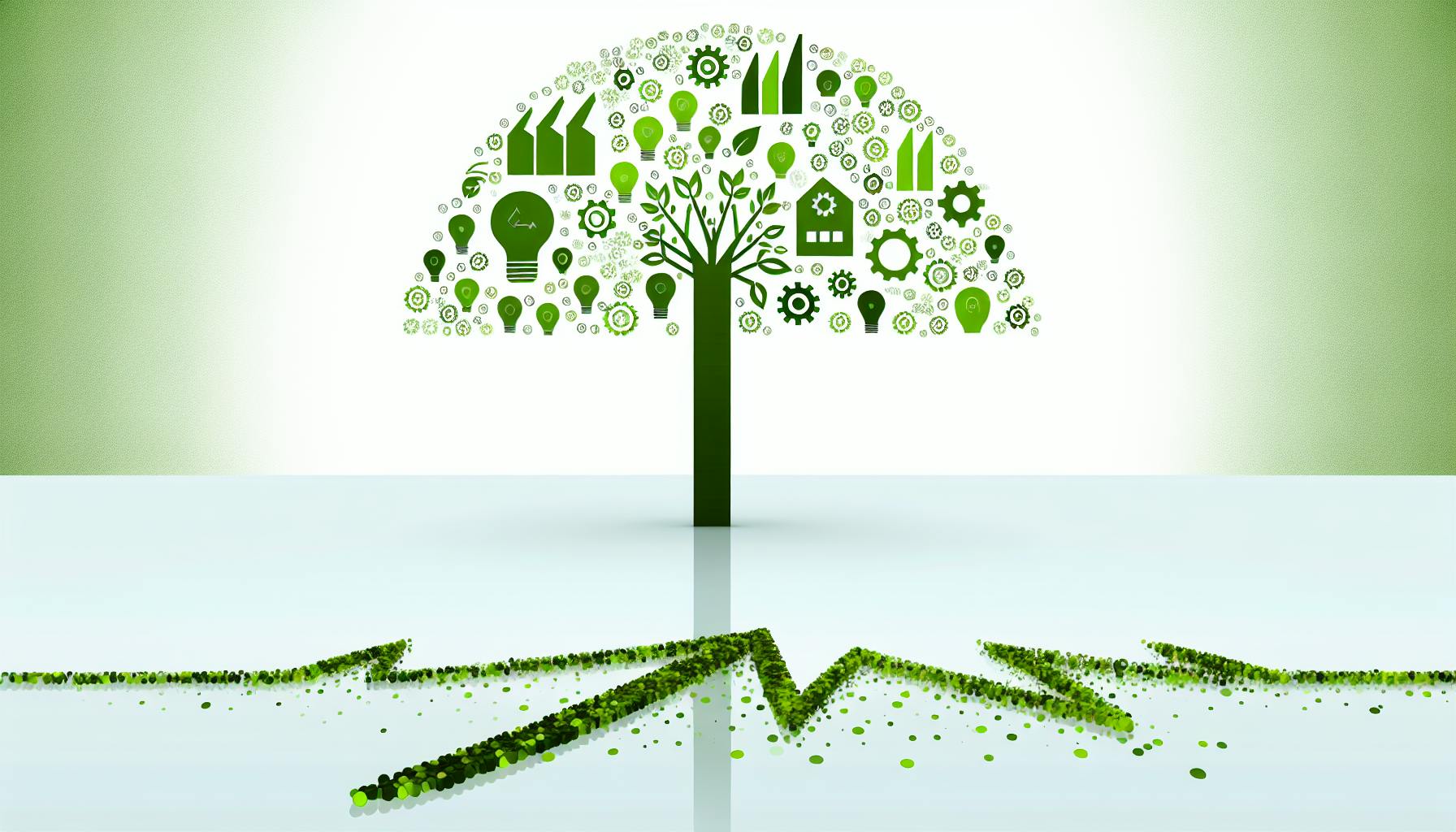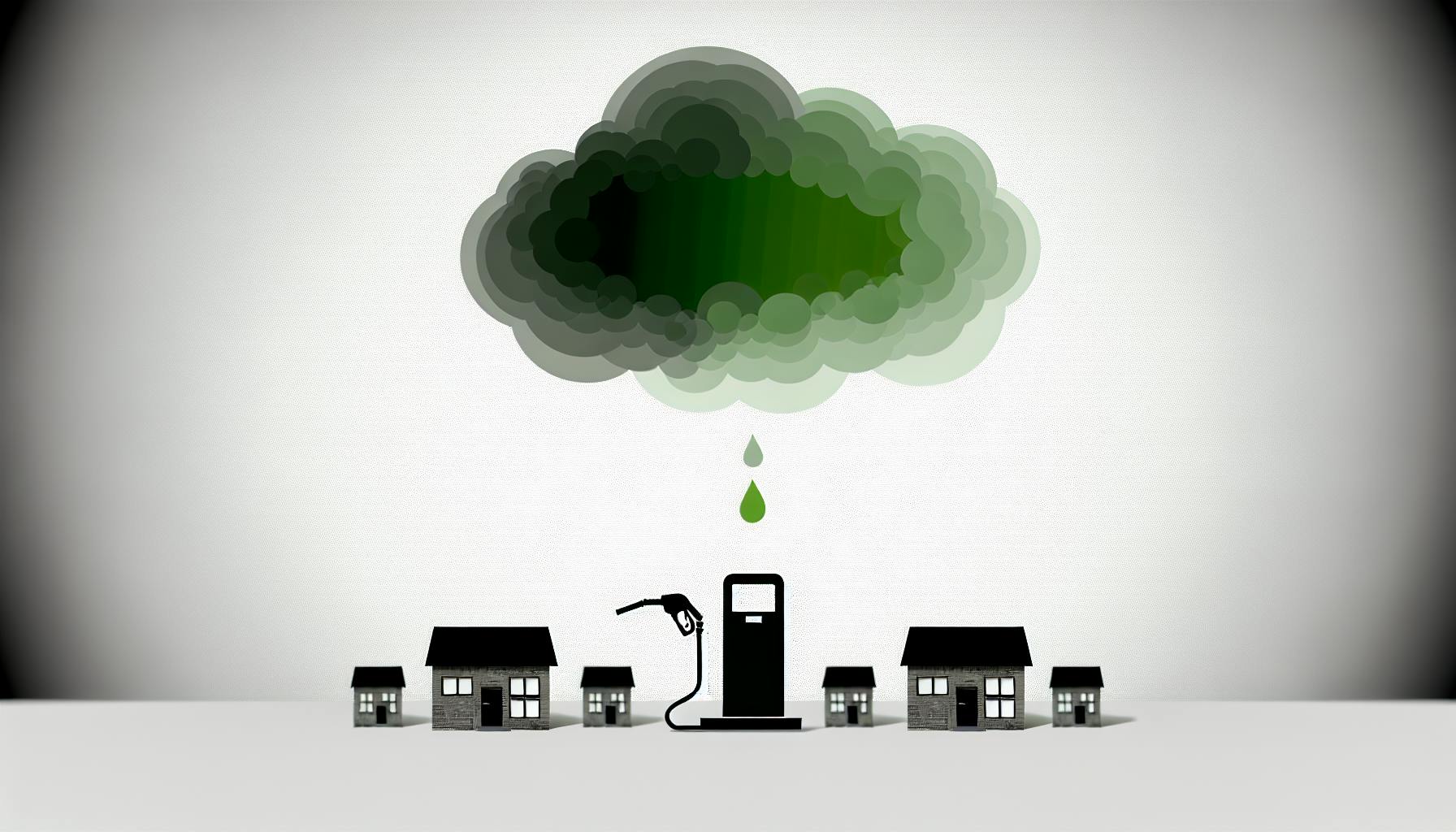To achieve net-zero emissions by 2050, small and medium-sized enterprises (SMEs) must take immediate action to decarbonise. This article outlines four essential steps for SMEs to reduce their carbon footprint:
- Understand Your Baseline Emissions
-
Collaborate with Supply Chain Partners
- Work with suppliers to implement joint emission reduction strategies
- Incentivise suppliers to prioritise sustainability
- Invest in sustainable solutions together
-
Develop a Decarbonisation Roadmap
- Set specific emission reduction targets
- Prioritise initiatives to achieve targets
- Create a timeline for implementation
- Allocate necessary resources
- Establish a system to track progress
-
Train and Empower Employees
- Promote a culture of sustainability
- Provide training on sustainable practices
- Encourage employee-led sustainability initiatives
- Recognise and reward sustainability efforts
By following these steps, SMEs can contribute to the transition to a low-carbon economy and create a sustainable future.
| Key Takeaway | Description |
|---|---|
| Understand Emissions | Calculate your baseline emissions to identify areas for reduction. |
| Collaborate | Work with supply chain partners to implement joint strategies. |
| Develop a Roadmap | Create a plan with targets, initiatives, timelines, and resources. |
| Empower Employees | Train employees and encourage their involvement in sustainability efforts. |
Decarbonising SMEs
1. Understand Your Baseline Emissions
To decarbonise your SME, you need to understand your current greenhouse gas emissions. This is called your baseline emissions. Calculating your baseline emissions helps you identify areas where you can reduce emissions.
What are the three scopes of emissions?
| Scope | Description |
|---|---|
| Scope 1 | Direct emissions from sources owned or controlled by your company, such as fuel combustion, company vehicles, and refrigerant leaks. |
| Scope 2 | Indirect emissions associated with the purchase of electricity, heat, or steam. |
| Scope 3 | Other indirect emissions that occur outside of your company's direct operations, such as supply chain emissions, business travel, and employee commuting. |
You can use a carbon footprint calculator or consult with a sustainability expert to calculate your baseline emissions.
Why is understanding your baseline emissions important?
- Identifies areas for emission reduction
- Helps develop a decarbonisation roadmap
- Enables tracking of progress towards decarbonisation goals
- Supports compliance with government regulations and reporting requirements
By understanding your baseline emissions, you can take the first step towards decarbonising your SME and contributing to a low-carbon economy.
2. Collaborate with Supply Chain Partners
Collaborating with supply chain partners is crucial for SMEs to reduce their carbon footprint effectively. This involves working closely with suppliers to identify areas for emission reduction and implementing joint strategies to achieve decarbonisation goals.
Collaborative Approaches
Here are some ways SMEs can collaborate with their supply chain partners:
| Approach | Description |
|---|---|
| Flag Green Services | Inform carriers about the need for green services, encouraging them to invest in emission-reducing fleet upgrades. |
| Joint Investments | Collaborate with suppliers to invest in sustainable solutions, such as renewable energy sources, to reduce emissions. |
| Incentivise Suppliers | Offer preferential treatment to suppliers who meet certain sustainability criteria, encouraging them to prioritise decarbonisation. |
By working together with supply chain partners, SMEs can reduce emissions, improve their sustainability credentials, and contribute to a low-carbon economy.
sbb-itb-919600f
3. Develop a Decarbonisation Roadmap
Creating a decarbonisation roadmap is a crucial step in an SME's journey to net-zero emissions. This roadmap serves as a guide, outlining the actions needed to reduce greenhouse gas emissions and achieve decarbonisation goals.
What to Include in Your Roadmap
A decarbonisation roadmap should include the following essential components:
| Component | Description |
|---|---|
| Current Emissions | Establish a baseline of current emissions to measure progress. |
| Emission Reduction Targets | Set specific targets for emission reduction. |
| Initiative Prioritisation | Identify and prioritise initiatives to achieve emission reduction targets. |
| Implementation Timeline | Create a timeline for implementing initiatives, including milestones and deadlines. |
| Resource Allocation | Allocate necessary resources, including budget and personnel, to support initiative implementation. |
| Progress Tracking | Establish a system to track and measure progress toward emission reduction targets. |
By developing a comprehensive decarbonisation roadmap, SMEs can ensure a structured approach to reducing their carbon footprint and achieving a sustainable future.
4. Train and Empower Employees
Empowering employees is a crucial step in decarbonising SMEs. By educating and engaging employees, businesses can tap into their collective potential to drive sustainability efforts and reduce carbon emissions.
Create a Culture of Sustainability
Establish a culture of sustainability within your organisation by communicating the importance of decarbonisation and the role employees play in achieving this goal. Encourage employees to share their ideas and suggestions on how to reduce carbon emissions and promote sustainable practices.
Provide Training and Resources
Provide employees with the necessary training and resources to understand the impact of their daily actions on the environment. This can include:
| Training Type | Description |
|---|---|
| Workshops | Hands-on training sessions on sustainable practices and carbon footprint reduction. |
| Webinars | Online training sessions on environmental responsibility and sustainability. |
| Online Courses | Self-paced courses on sustainable practices, carbon footprint reduction, and environmental responsibility. |
Encourage Employee-Led Initiatives
Encourage employees to take ownership of sustainability initiatives by forming green teams or committees. These teams can develop and implement sustainability projects, such as:
| Initiative | Description |
|---|---|
| Energy Reduction | Reduce energy consumption by implementing energy-efficient practices. |
| Recycling Programs | Implement recycling programs to reduce waste and promote sustainability. |
| Sustainable Procurement | Promote sustainable procurement practices to reduce carbon emissions. |
Recognise and Reward Sustainability Efforts
Recognise and reward employees who demonstrate a commitment to sustainability and decarbonisation. This can include:
| Recognition Type | Description |
|---|---|
| Incentives | Offer incentives for employees who develop innovative sustainability solutions or achieve significant carbon reductions. |
| Bonuses | Provide bonuses for employees who demonstrate a commitment to sustainability and decarbonisation. |
| Public Recognition | Publicly recognise employees who contribute to sustainability efforts and decarbonisation goals. |
Conclusion
Decarbonising SMEs requires a structured approach that starts with understanding their baseline emissions and extends to collaboration, planning, and employee engagement. By following the four essential steps outlined in this article, SMEs can set science-based targets, reduce their carbon footprint, and contribute to the fight against climate change.
Key Takeaways
To achieve a net-zero future, SMEs must:
- Empower employees to drive sustainability efforts
- Collaborate with supply chain partners to reduce emissions
- Develop a decarbonisation roadmap to guide their journey
- Understand their baseline emissions to track progress
Staying Committed
As SMEs embark on their decarbonisation journey, they must:
- Stay committed to their goals
- Continuously monitor and evaluate their progress
- Be open to new ideas and innovations that can help them achieve a sustainable future
By working together, we can create a better future for all.



